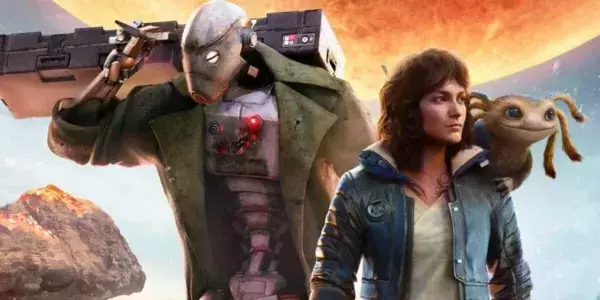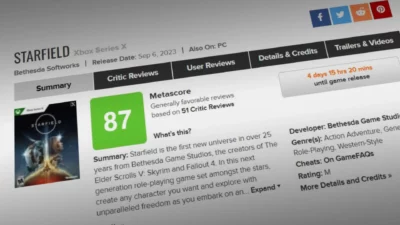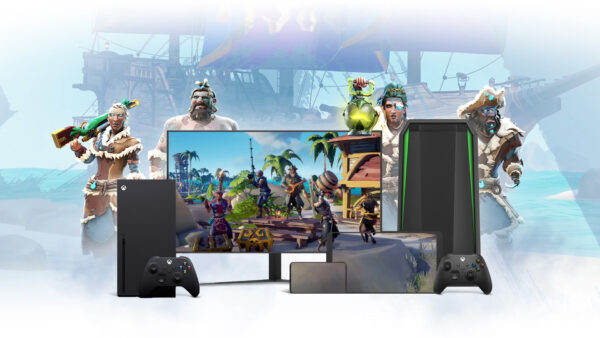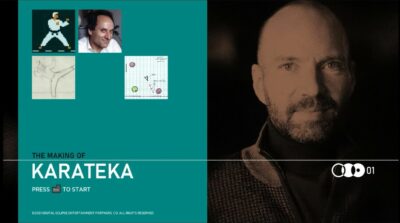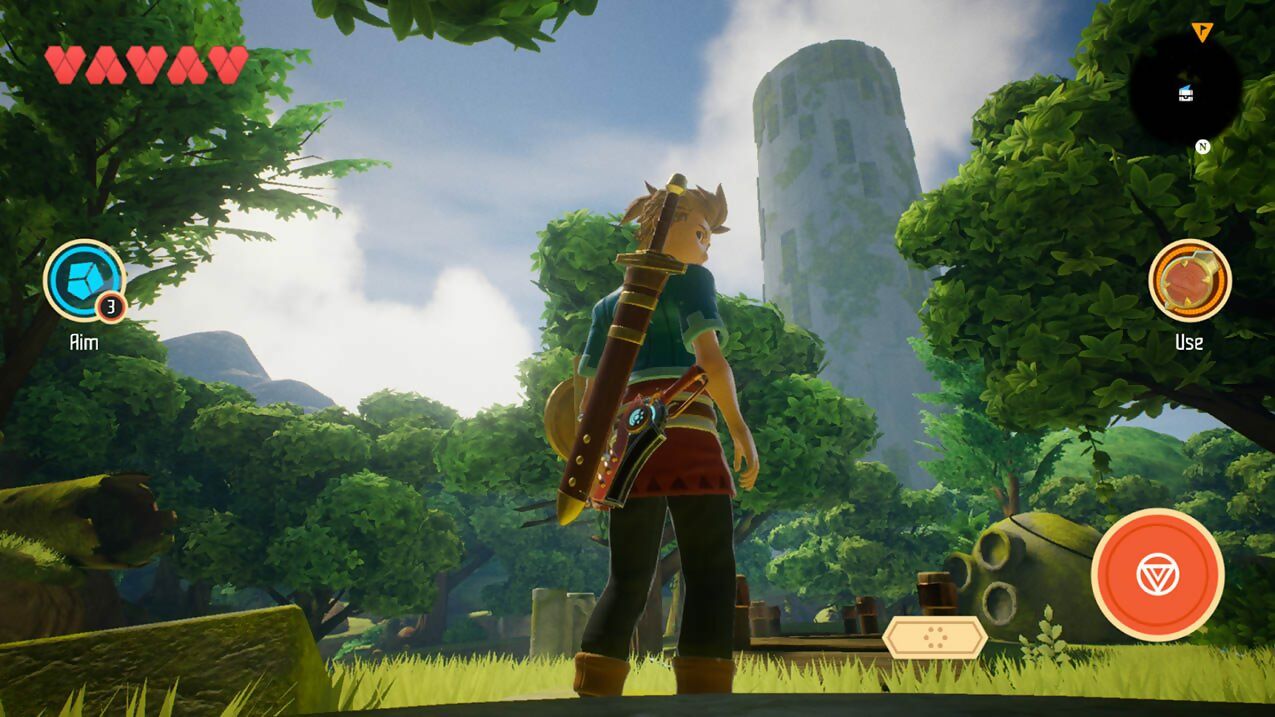
If there’s one thing indie game developers have learned in recent years, it’s that nostalgia is a powerful tool.
While triple-A studios might feel obliged (often contractually) to make games that are technically cutting-edge, a community of smaller-scale developers are reworking the mechanics of past genres for fresh ideas. Take the Zelda-like: a type of action adventure generally (though not always) played from a top-down perspective, and influenced by designer Shigeru Miyamoto’s genre-defining titles, The Legend of Zelda and A Link to the Past.
So, with Nintendo recently announcing its own reworking of a top-down classic – the Game Boy gem Link’s Awakening is coming to the Switch this year – we caught up with a few indie developers to learn their thoughts on making the perfect Zelda-like.
A call to adventure
“I think the most important thing for us was to capture the warmth of the classic adventure games,” says Heikki Repo, creative director of Cornfox & Bros., the Finnish game studio behind Oceanhorn: Monster of Uncharted Seas.
Released in 2013, the game places you in the role of an unnamed boy on a quest to save the land from evil. The only way to do so? By travelling from dungeon to dungeon, of course, gaining weapons and abilities, and besting the malicious beastie that awaits at the end of your journey. Sound familiar? Of course it does.
As slavish as games like Oceanhorn might seem to the Zelda formula on the surface, Repo is a firm believer in iterating on the franchise’s familiar hallmarks. “It’s more streamlined than Zelda,” Repo says, “as we wanted to strip the experience from tutorial sections and make dungeons more organic.”
Rather than sticking slavishly to the past, the makers of the best Zelda-likes have a willingness to add ideas from other genres into the mix. This is something that’s particularly true of Oceanhorn, as Repo explains. “We have lightweight RPG mechanics, like XP and level ups as you gain Adventurer Rank. We have a spell system where spells are used to manipulate the environment as well as in combat. These are not unique features for video games, but for a Zelda-like, we’re steering them in our own direction.”
Oceanhorn might be an original game in many aspects, yet it’s fair to say that it still couldn’t exist had Nintendo not laid down the initial Zelda foundation in 1986 – then firmly cemented it five years later with A Link to the Past.

Hob offers puzzling in the classic Zelda sense
For Patrick Blank, creative director of Runic Games’ Hob, a designer’s desire to reinvent what’s come before shouldn’t come at the cost of what made players fall in love with the formula in the first place.
This begs the question: what is the Zelda formula, exactly? “A sense of exploration, discovery, seeing your character progress to become more than they were at the start,” Blank suggests. “There’s so much there, I’m sure it’s a bit different for each individual. For me personally, it’s definitely all of those, combined with an interesting world to experience them in.”
About a cloaked traveller tasked with bringing life back to a broken world, Hob was Runic Games’ final game before its staff were forced to form a new, Seattle-based studio called Monster Squad Games in 2018.
Despite these events, Blank fondly remembers how Nintendo’s NES classic action-adventure informed his studio’s own Zelda-like. “The biggest takeaway from Zelda was seeing a problem or path that you couldn’t access right away, and needing to come back later with the right item to gain access,” he says. “We did build the world of Hob around that a lot.”
Although influenced by Zelda, Hob is far less verbose than Nintendo’s series. Like such celebrated indie classics as Journey and Limbo, Hob tells its story without in-game text – a stylistic choice that wasn’t without its challenges for developer, Runic Games.
“It was very difficult to do,” says Blank, adding that, if anything, the lack of text forced the team to lean even more on purely visual, Zelda-like design ideas. “We relied a lot on exploration, letting the player discover new areas and moments, and having environmental storytelling in those areas hint at events, or ask questions,” he says. “It was intentionally vague.”
Plan of attack
Hob is a Zelda-like that relies more on its setting and exploration than combat, so traditional items from Nintendo’s series – hookshot, bombs, boomerang – are replaced by simple swings of the protagonist’s hefty stone fist.
By contrast, indie developer Heart Machine’s hit Zelda-like, Hyper Light Drifter, offers a richer, more free-form combat system. Described by lead developer Alex Preston as a combination of A Link to the Past and Diablo, Hyper Light Drifter replicates the look and feel of old-school SNES games through its 16-bit pixel art, environments, and top-down perspective.
“You want to give the audience enough information to draw them in and keep them interested,” Preston says, “but you don’t want to push them too far so that it becomes boring.”

Hyper Light Drifter… well, it’s great
Hyper Light Drifter’s combat is designed to ensure this doesn’t happen, as the protagonist is equipped with a wide variety of weapons with which to beat each dungeon’s enemies and bosses. In the original Zelda, attacks amounted to little more than arrow shots and sword swings. Hyper Light Drifter, meanwhile, bucks this trend, and is much faster-paced than its peers as a result.
Rise to the challenge
Despite the many ways modern games seek to rework Zelda’s core elements, it’s arguable that a Zelda-like is only as good as its dungeons. Of course, Breath of the Wild’s shrines represented a shift away from this series staple; indie developers, meanwhile, are still flying the flag for the earlier Zelda games’ puzzle box gauntlets, and Swedish studio Ludosity’s Ittle Dew series is a prime example of this.
With a bold cel-shaded art style, 2016 sequel, Ittle Dew 2, is notable for its light-hearted tone; it openly (and affectionately) parodies the series from which it draws its inspiration. From the aptly named Pillow Fort tutorial to the deceptive trickery of Slippery Slope, Ittle Dew 2 centres each of its dungeons on a specific theme in true Zelda-esque fashion.
But while some Zelda dungeons were capable of causing frustration (Ocarina of Time’s tricky Water Temple, say) Ludosity CEO Joel Nyström managed to come up with a way to sidestep this in Ittle Dew 2. “Challenge is fun,” Nyström says, “but we made sure it was also fair. We also made sure that the greatest challenges in the game were optional, leaving them for players who wanted to challenge themselves.”
Creating finely tuned, multilayered dungeons is crucial, but more and more Zelda-likes are letting players choose the order in which they complete them – an approach that’s akin to the open-world design found in many recent triple-A blockbusters.

Ittle Dew’s ice level, harking back to the classics
“For the first Ittle Dew, we switched up the structure of the dungeon-item loop by providing a store where you buy items, and (players are) able to tackle dungeons in any order,” Nyström says, before adding, jokingly, “This was stolen from us in the Zelda game, A Link Between Worlds, and we’re definitely suing Nintendo.”
As great as increased player choice may be, Hob’s Patrick Blank suggests that, when it comes to dungeon design, there’s no replacement for good, old-fashioned playtesting and iteration. “Making fun puzzles is really hard,” Blank tells us. “We would do a lot of prototyping and early on pass it around to others in the studio to get feedback. Like everything else, you temp it out, test it, and see what else you can add to it or tweak about it.”
This was certainly the case for Hob, Blank adds. “Lots of things shifted around as new gameplay elements got added to the game, and we would go back and try to fit more into the puzzles based on those. It’s a long process.”
Ultimately, with the Zelda series being so good at reinventing itself, it only makes sense that games that seek to transport players back to the early games’ mix of exploration, action, and puzzle-solving would also move with the times.
Whatever twists and contortions modern indies might make to Shigeru Miyamoto’s original concept, though, there’s one thing that any great Zelda-like needs to create: the sense of a lone, ambitious adventurer striking out in a dangerous yet captivating world.


